All about harmonicas
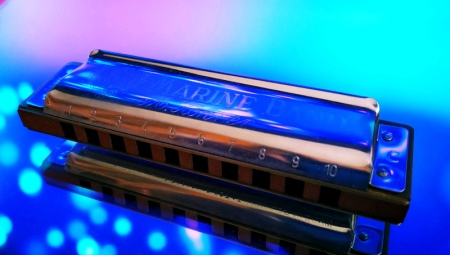
The harmonica is a well-known musical instrument. The history of its appearance, the structural features and the principle of operation, how to choose and not regret it, as well as many other things will be discussed below.
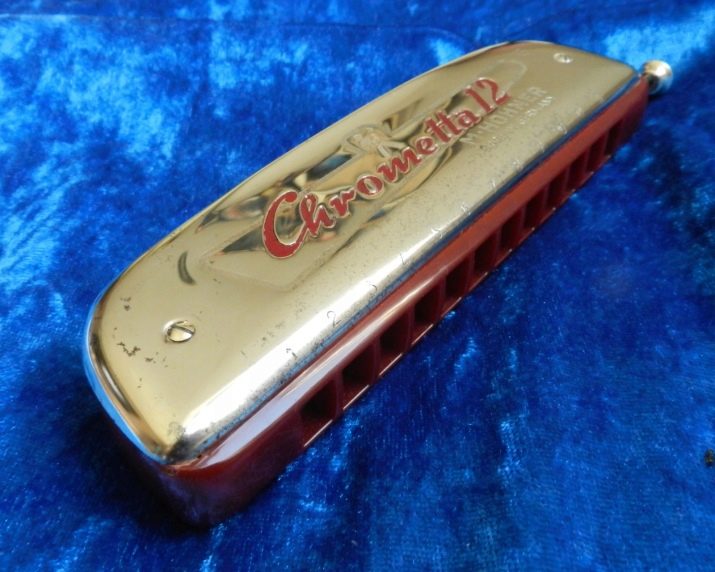
The history of the musical instrument
The harmonica, the second name of which is "Harp", is currently in demand among a large number of different musical performers. They play music of a wide variety of styles, including blues, jazz, country, folk, rock and more. The musicians who play this instrument are called harpers.
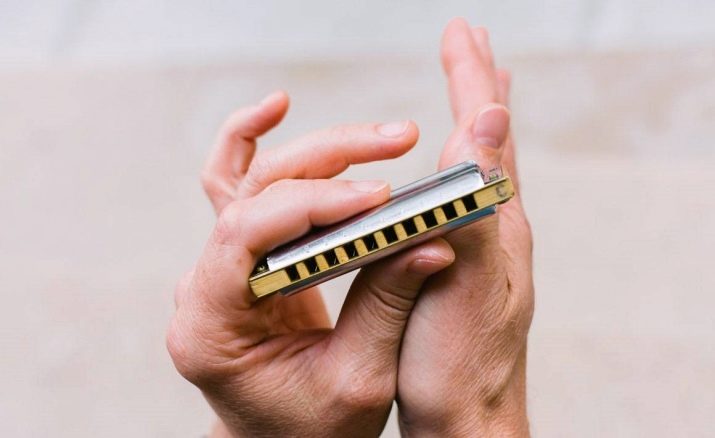
At the present time, the harmonica can be of various varieties, it can be large or small, single-row or double-row and not only. Let's get acquainted with the history of such an interesting musical instrument.
It appeared in the nineteenth century - in 1821 - thanks to Christian Friedrich Ludwig Buschmann, who was a German watchmaker by profession.

He gave his creation the name "aura". It looked like a small metal plate with a certain number of cuts, which were closed with steel tongues.

Initially, Bushman conceived of creating a tuning fork for his children, and there was no question of a harmonica. However, it turned out what happened. The notes in this invention were arranged in chromatic sequence, and the sound was produced only with the help of the player's exhalation.

Associated with the appearance of the harmonica and a master with the name Richter, who was originally from Bohemia. Buschmann was only five years ahead of him with the creation of his instrument, but Richter, albeit a little belatedly, created a more improved design in 1826. She had twenty tongues and ten holes, and they were separate, each of them was intended specifically for inhalation or exhalation. All this was fixed in a cedar wood case.
This version became standard throughout Europe and was used with a diatonic scale.

This musical instrument did not bypass North America, where it was brought in by Matthias Honer in 1862. He produced his own harmonicas, and therefore the first copies that appeared in this country had an inscription on the lining with the name of the manufacturer. This marketing move became more than successful, in modern times Mathias Honer would definitely be included in the number of oligarchs and monopolists. By the eighties of the twentieth century, he began to produce more than seven hundred thousand harmonicas. By the end of the year, the company and the instrument had become so in demand that they began to produce as many as five million harmonicas a year!

The first recordings of the sound of this instrument were made in the United States only in the early twenties, but it could be seen back in 1894 in silent films.

The Great Depression dating back to the thirties, as well as the Second World War in the forties, had a beneficial effect on the spread of the harmonica. Due to the migration of southerners to the west coast and northern states, it became popular throughout the country.

If we talk about musical performers, then by far the most famous of all is Francis Wakefield, aka Buddy Wakefield. For thirty years now, he has been involved in charity events as a musician and plays the harmonica. He even has his own program called "Tuning for Better Breathing", which means "Melody for better breathing". With her, he visits a large number of different cities and countries, collecting donations, for which he purchases harmonicas of the same Honer's company and a book. He sends all this, along with money, to sick children, families in need and other people who need help.

By the way, it is worth mentioning that the harmonica has declared itself not only around the globe, but also in near-earth orbit. It was she who, of all the musical instruments, was honored to fly into space. It happened in 1965, Wally Schirr took the harmonica with him on the flight. It was with her help, being in space, that he congratulated the audience and the staff of the Mission Control Center on Christmas, playing the famous song "Jingle Bells".
Numerous celebrities have mastered the harmonica playing, including actor Bruce Willis and even Steve Jobs.


In the modern world, this instrument is intended not only for entertainment purposes, but also for medical purposes. It is used in diseases of the respiratory organs for the purpose of recovery and rehabilitation, since the accordion contributes to the enhanced work of the respiratory system.

Device and principle of operation
Few people do not know what a harmonica looks like. It is quite compact in size, and its device can not be called complicated. As for the visual part, it includes only two parts: the upper and lower case covers. The inner part is somewhat more complicated: grooves, slots, screws, two plates with tongues for inhalation and exhalation, as well as a comb. In addition, an additional accessory - a holder - can be purchased for the instrument.

The harmonica belongs to the family of reed musical instruments, which implies that it has reeds made of copper, which vibrate under the influence of the flow of air, due to which the sound is created. It works by using the lips and tongue, unlike other musical instruments belonging to the reed family, which use a special keyboard.

Views
There are many varieties of harmonica. They differ from each other in different ways. So, they can have a different number of holes: from 10 to 24 pairs. Besides, they differ in tonality, and in their structure, as well as in size.

Below we will consider the main types of harmonies.
Chromatic
This type of harmonicas, unlike others, has the ability to produce any sounds of the chromatic scale, since the arsenal of this instrument includes 12 notes of octaves and at the same time has semitones.

Changing the sound of this accordion occurs due to a special shutter that closes some of the holes. If it is located in its usual position, then the sounding of the notes corresponds to the main steps of the chromatic scale. Otherwise, when you press the button, which is located on the side, this part will change its location, thereby covering other holes. This will raise the sound of the instrument by one semitone.
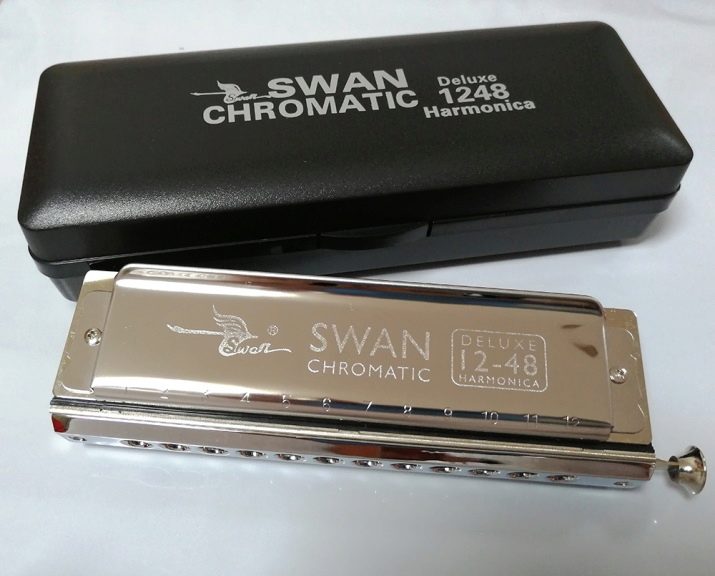
In view of all the design features of this harmonica, absolutely any piece of music can be performed on it. But this requires good preparation, both theoretically and practically.
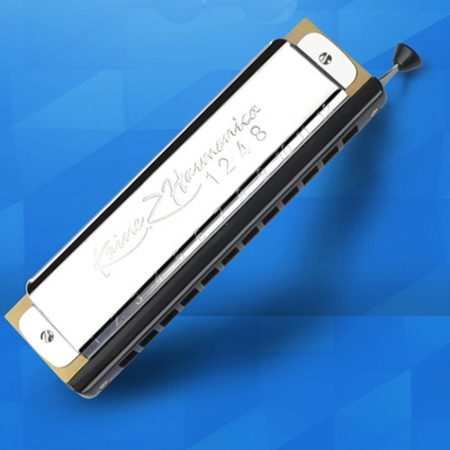
Diatonic
This type of instrument has 10 openings for inhalation and exhalation. You can play both chords and various notes on it. But it is worth considering that in this case, the sound will come in accordance with the diatonic scale, without semitones, however, they can be added using a special technique.

This system has a second name - "blues". This happened due to the fact that these diatonic systems gained their fame specifically during the period of demand for the blues and its dynamic development. You can play such harmonicas, of course, not only blues. Their sound is in harmony with rock music, and with jazz, and with folk, and with other musical genres.

This type of harmonica will be an excellent choice for a novice performer, as it can be used to learn all the basic techniques of playing without damaging anything in the instrument. For beginners, diatonic harmonies in major tuning are especially recommended, since the arrangement of the notes of this instrument makes it possible to most easily memorize melodies of different genres.

Orchestral
In general, orchestral harmonicas, unlike all other varieties, are much less common. This type includes bass accordions, as well as chord and those that have several manuals.
Mastering the game on this kind of harmonica is a difficult process, since this model is one of the professional ones, and therefore is completely unsuitable for beginners.


Tremolo
Harmonica varieties of tremolo have some peculiarities in terms of their structure. They consist of two plates, inside of which are slightly distorted tongues. Air currents, penetrating through the holes, cause them to vibrate. It turns out that one of the reeds produces a clean note, and the other - slightly deviating from the required pitch.

In view of these features, the tremolo harmonica sound is more intense and emotional. Nevertheless, due to the lack of halftones, the scope of this instrument is somewhat limited.

Popular manufacturers
There are many manufacturers of harmonicas. Below is an overview of the very best of them.
- Honer. This is a well-known German company founded by the same Matthias Honer. Yes, it still exists, and it is one of the best, but at the same time the most expensive.

- Seydel. Another German company that produces high-quality lip accordions, but the cost of their production cannot be called low.

- Suzuki. This company is also not inferior in quality and produces diatonic harmonicas, although their main field of activity is far from being related to musical instruments.

- Tombo. This manufacturer is world famous. His choice of harmonicas is huge, while finding something of a certain price category is unlikely to be difficult, because the price range of this manufacturer is simply huge.


- Stagg. This Belgian manufacturer of musical instruments is also not much inferior in terms of the quality of its products. We recommend that you pay attention to the accordions of this particular company if you are a beginner and are just learning to play. The low price tag for the tool will definitely delight you.

How to choose?
Choosing a harmonica is a rather complicated matter, because in modern stores with musical instruments, they are presented in large quantities.

First you need to decide on the level of your skill. If you are a beginner musician, we recommend choosing something simpler. However, do not chase after cheap tools, the price tag of which varies within three hundred rubles. The sound of such copies usually leaves much to be desired, which is why the desire to play and develop their skills disappears. It is also not worth buying an expensive instrument right away, the best for a beginner will be a copy worth no more than one and a half thousand rubles.
First of all, pay attention to the assembly of the instrument, this applies both to the accordion for beginners and for professionals. If the assembly is of high quality, all holes will be blown out without much difficulty.

The material of the body plays an important role, which is the main component of the harmonica. So, a wooden accordion will sound somewhat better than a plastic one, but the second option is much more stable and does not require such maintenance as a wooden instrument.
It is worth paying attention to the tongues of the instrument. So, copper tongues are more prone to breakage, and steel tongues are stronger, but it is more difficult to play them, and they are intended, rather, for professional play.
The rest of the factors have little effect on the sound of the instrument, and therefore further you can focus on your preferences.

Tool setting
Tuning a harmonica, unlike many other musical instruments, is not easy, this process has some peculiarities. To do this, you will need round scrapers, as well as needle files, a thin steel scraper to support the tongue, and hooks to lift them. Besides, other tools may come in handy, such as a hammer, pliers, knife, or scissors.
Then it all depends on what key you want to tune the instrument to. At the same time, in the process, you need to pay a lot of attention to controlling the quality of the settings.

How to play?
At the initial stage, you need to choose a type of harmonium, as well as learn to read and understand its tablature.
The technique for beginners in general is not difficult. The basis is to play notes as you exhale. You need to blow softly and gently. Usually, the holes located next to each other sound harmoniously with each other, and therefore you need to try to blow into several holes at once in order to try to produce something that looks like beautiful music.
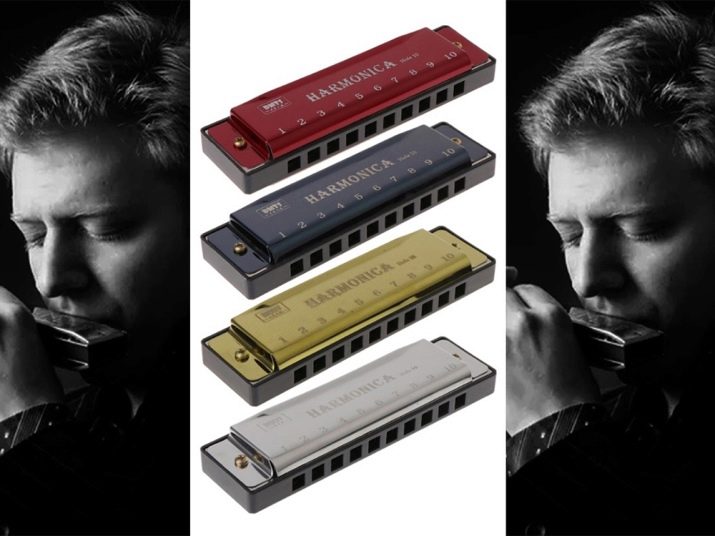
To change the notes, you need to take a deep breath, while not forgetting that you need to inhale the air not with all your might, but gently. Inhale and exhale through the mouthpiece. This is how you will be able to get to all the notes tuned for the instrument.
Practice is of great importance in learning to play the harmonica. Try to play the entire range as well as each note individually.This way you can learn to fully control your instrument, which will give you confidence and make the game as comfortable as possible. Particular attention should be paid to mastering the switching of single notes and several notes.
Having mastered the most basic rules, you can move on to more advanced techniques.

How to care for a harmonica?
In general, caring for a musical instrument is not a very difficult process.
To begin with, let's note the main thing - you cannot store the instrument in a plastic box, which usually comes with it. This container is sealed, and if you forgot to remove moisture from your accordion and put it in this box, then later the instrument will rust, and very quickly. You can avoid this by making a couple of holes in the box.
Before playing, it is recommended to thoroughly brush your teeth and the entire oral cavity as a whole, so that food debris does not get stuck in the instrument.
All of the above is only the basis for caring for the instrument, now let's move on to describing the process of cleaning it.

In order to clean the accordion without disassembling it, you will need a toothpick. With the help of it, you need to remove all unnecessary from the corners of the holes, if any. You don't need to push the toothpick too deeply, as you risk damaging the tongues.
Instead of a toothpick, you can also use an ear stick, having wet it beforehand. Again, you do not need to push it deeply. Make sure that the remnants of the cotton are not stuck anywhere.
For a more thorough cleaning, disassembly of the instrument is required.

Of course, you do not need to wash each of its parts under water. In general, water, in principle, will be useless in the first stages of a full cleaning. Lemon squeezed juice or a vinegar solution and washing eraser are most effective. Dip the accordion boards in this liquid, but do not keep them there for long - three minutes will be more than enough. Otherwise, you run the risk that the tongues may become upset.
After cleaning the board, you need to rinse it under water, while using a soft toothbrush, again doing everything very carefully, carefully and only along the tabs. Next, blot the board with a towel and dry with a hair dryer.

If your problem is deeply embedded rust in the metal, then it is recommended to use a toothbrush, as well as toothpaste or dishwashing soap. After cleaning, again, you need to thoroughly rinse and dry everything.
To clean the lid, you can do just one wash, and in rare cases - thorough wiping and applying a paste, which will contribute to the shine and gloss.
In addition, if you wish, you can go to the workshop to clean the harmonica.









